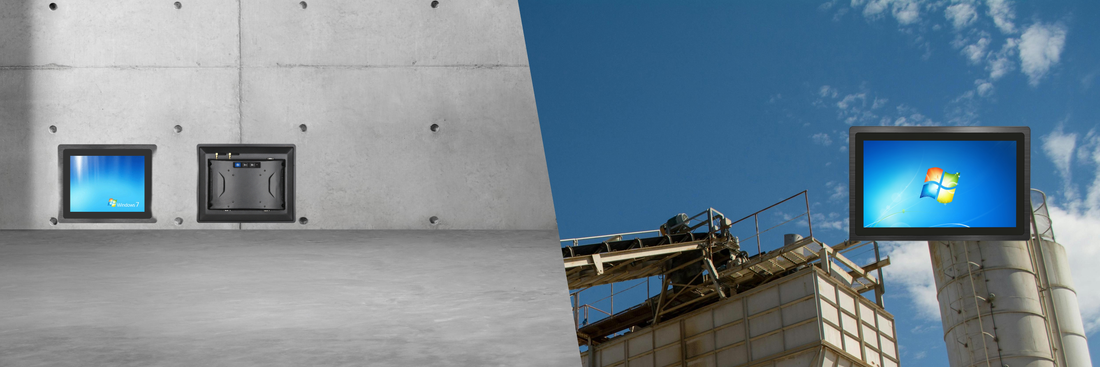
Revolutionizing Edge Computing: Harnessing the Power of EDGEBoost Nodes for Real-Time Performance
Revolutionizing Edge Computing: Harnessing the Power of EDGEBoost Nodes for Real-Time Performance
The continuous evolution of Industry 4.0 is transforming the landscape of industrial computing, necessitating smarter solutions at the rugged edge. To meet the growing demand for real-time processing and intelligence, businesses are moving towards hardware innovations that bridge the gap between data generation and analysis. By processing data closer to the source, edge computing offers unmatched efficiency, drastically reducing latency and optimizing workloads for real-time insights and automation.
At the forefront of these innovations are EDGEBoost Nodes, hardware accelerators designed specifically for rugged edge computing environments. EDGEBoost Nodes push the boundaries of performance by integrating advanced storage and processing capabilities, offering significant benefits for industries looking to enhance their operations. This article delves deeper into the technical aspects of these nodes, their applications, and how they are driving the future of edge computing.
The Rise of Edge Computing: A Necessity for Industry 4.0
The concept of edge computing has rapidly gained prominence as industries look for faster, more efficient ways to handle and process massive amounts of data generated by IoT devices, sensors, and other connected technologies. Unlike traditional cloud computing, which centralizes data processing, edge computing decentralizes it, allowing data to be analyzed closer to its source. This approach not only minimizes the reliance on external networks but also reduces latency, ensuring real-time decision-making capabilities.
Edge computing offers several key benefits:
- Low latency: Processing data locally eliminates delays caused by transmitting information to a distant cloud server, crucial for applications requiring real-time responses, such as autonomous systems and industrial automation.
- Reduced bandwidth usage: By processing and filtering data at the edge, only the most important information is transmitted to the cloud, lowering the overall bandwidth consumption.
- Enhanced reliability: In environments with limited or unstable connectivity, edge computing ensures that operations can continue uninterrupted by reducing the dependency on an internet connection.
Introducing EDGEBoost Nodes: Pioneers of Rugged Edge Performance
The RCO-6000-CFL Series AI Edge Inference Computers, featuring EDGEBoost Nodes, are designed to thrive in the most demanding environments while offering powerful performance. These nodes incorporate cutting-edge technologies such as Intel 9th Generation Core Processors, GPU acceleration, and ultra-fast NVMe SSD storage, delivering a new level of computational efficiency at the edge. By leveraging these hardware accelerators, industries can achieve faster data processing, real-time AI inferencing, and streamlined workload management.
The modular architecture of EDGEBoost Nodes is particularly notable for its flexibility. Designed with a two-piece modular structure, the RCO-6000-CFL Series can be easily expanded to meet various edge computing needs. The addition of an EDGEBoost Node not only enhances the system's storage and processing capabilities but also allows users to tailor the setup to their specific application requirements.
Key Components of EDGEBoost Nodes
- NVMe SSD Storage: One of the standout features of EDGEBoost Nodes is the integration of hot-swappable NVMe SSDs, which offer unprecedented storage speeds. NVMe technology enables direct communication between the storage drive and the system’s CPU, significantly reducing latency compared to traditional SATA SSDs. For industries handling large datasets, such as machine learning and autonomous systems, this rapid data access is vital for maintaining operational efficiency.
- GPU Acceleration: Graphics Processing Units (GPUs) play a crucial role in accelerating AI workloads by processing data in parallel across thousands of cores. This makes them ideal for applications such as machine learning and deep learning inferencing, where large amounts of data need to be processed simultaneously. The inclusion of Nvidia 2060 Super GPUs in EDGEBoost Nodes provides organizations with the computational power required for real-time AI analysis.
- PCIe Expansion: The PCIe Gen 3 connectivity in these nodes facilitates fast communication between the CPU and other components, ensuring the smooth transfer of large volumes of data. With PCIe slots available for further expansion, system integrators can easily enhance the capabilities of their edge devices, adding additional accelerators or storage options as needed.
Detailed Overview of EDGEBoost Nodes
The RCO-6000-CFL Series comes with several different EDGEBoost Node configurations, each designed to address specific needs:
- EDGEBoost Node #1 – RCO-6000-CFL-2N-2060S AI Edge Inference Computer: This configuration combines dual NVMe U.2 SSDs and Nvidia 2060 Super GPU for exceptional data storage and acceleration, perfect for AI applications requiring fast data processing and reliable storage.
- EDGEBoost Node #2 – RCO-6000-CFL-4NH AI Edge Inference Computer: This version prioritizes ultra-high-speed NVMe storage with RAID configurations (0, 1, 5, and 10), ideal for tasks that require large data storage with rapid access, such as autonomous vehicle development.
- EDGEBoost Node #3 – RCO-6000-CFL-4N-2060S AI Edge Inference Computer: Offering GPU acceleration and additional NVMe SSD storage, this node is optimized for high-performance AI inferencing.
- EDGEBoost Node #4 – RCO-6000-CFL-8NS AI Edge Inference Computer: This node focuses on maximum NVMe storage capacity, supporting up to 8x hot-swappable NVMe SSDs, ideal for environments with large-scale data collection and storage requirements.
Ruggedness and Durability: Essential for Harsh Environments
One of the core strengths of the RCO-6000-CFL Series and its EDGEBoost Nodes is their ability to perform under extreme conditions. Built with a fanless design to eliminate dust ingress and reduce failure points, these systems are specifically engineered for deployment in rugged environments. They are capable of withstanding shocks, vibrations, and temperature extremes, making them well-suited for industries such as manufacturing, mining, and surveillance.
These systems feature:
- Shock and vibration resistance: Compliant with MIL-STD-810G standards, the RCO-6000-CFL Series is built to endure the physical stresses common in industrial settings.
- Wide operating temperature ranges: From -40°C to 85°C, the systems are designed to operate reliably in both extreme heat and cold.
- Solid-state storage: By incorporating SSDs instead of traditional hard drives, these systems further enhance their durability and resistance to shocks.
Future Applications of EDGEBoost Nodes
As the role of edge computing continues to expand, EDGEBoost Nodes open up new possibilities across various sectors:
- Industrial Automation: EDGEBoost Nodes are invaluable in industrial settings where real-time decision-making and automation are crucial. They enable faster communication between sensors, machinery, and control systems, resulting in more efficient operations.
- Autonomous Systems: Autonomous vehicles rely on large amounts of data to train and improve AI algorithms. With the high-speed storage and processing capabilities of EDGEBoost Nodes, these systems can gather and store the necessary data to enhance vehicle safety and functionality.
- Mining Operations: In the hazardous environments of surface and underground mining, EDGEBoost Nodes can automate operations, reducing the need for human intervention and ensuring safety.
- Smart Surveillance: Intelligent surveillance systems can benefit from edge computing by analyzing video footage locally and sending only essential data to the cloud. This reduces bandwidth usage and enhances the security and efficiency of monitoring systems.
Conclusion: The Future of Edge Computing with EDGEBoost Nodes
The integration of EDGEBoost Nodes into rugged edge computing systems marks a significant leap forward in the capabilities of industrial automation, AI, and IoT applications. By combining powerful storage solutions with GPU acceleration, these nodes provide a robust platform for processing large datasets, enabling real-time decision-making and analysis. With their modular design and adaptability to harsh environments, EDGEBoost Nodes are set to become a cornerstone of the future edge computing landscape.
For more information about advanced edge computing solutions and how they can be customized to your business needs, contact support at support@IMDTouch.com or visit www.IMDTouch.com. Explore the possibilities of rugged, high-performance edge computing for your organization today!
